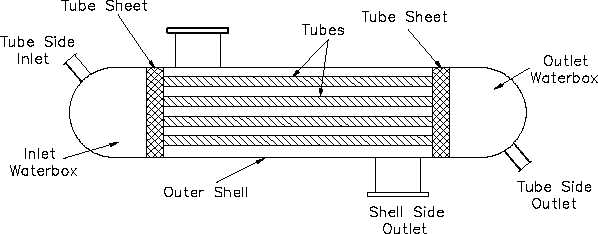Heat Transfer
HEAT EXCHANGERS
Single-phase heat exchangers are usually of the tube-and-shell type; that is, the exchanger
consists of a set of tubes in a container called a shell (Figure 8). At the ends of the heat
exchanger, the tube-side fluid is separated from the shell-side fluid by a tube sheet. The design
of two-phase exchangers is essentially the same as that of single-phase exchangers.
Figure 8 Typical Tube and Shell Heat Exchanger
Parallel and Counter-Flow Designs
Although ordinary heat exchangers may be extremely different in design and construction and
may be of the single- or two-phase type, their modes of operation and effectiveness are largely
determined by the direction of the fluid flow within the exchanger.
The most common arrangements for flow paths within a heat exchanger are counter-flow and
parallel flow. A counter-flow heat exchanger is one in which the direction of the flow of one
of the working fluids is opposite to the direction to the flow of the other fluid. In a parallel flow
exchanger, both fluids in the heat exchanger flow in the same direction.
Figure 9 represents the directions of fluid flow in the parallel and counter-flow exchangers. Under
comparable conditions, more heat is transferred in a counter-flow arrangement than in a parallel
flow heat exchanger.
Rev. 0
Page 31
HT-02


